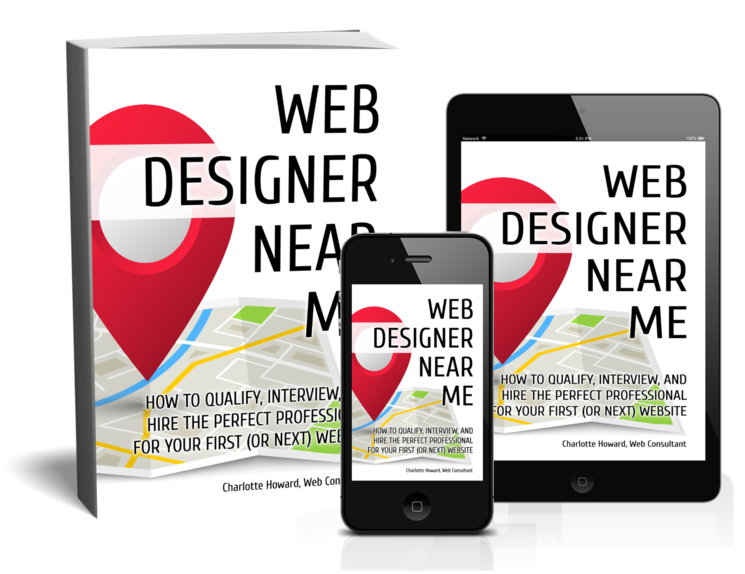Design, SEO, and Accessibility: The 3 Pillars of a User-Friendly Website
Creating a website that is simple and fun to use is like building a playground where everyone wants to play. In Phoenix, web design is about making sure each visitor can find what they need quickly and easily. When you start a website project, it’s essential to think about how the end user will feel and interact with the site. Clear buttons, simple menus, and fast loading times can make all the difference.
Giving people a good experience on your website helps keep them around and happy. Within your target audience, you’ll want all types of people, including those with different abilities, to enjoy using your site. Adding features like text that’s easy to read and navigation that’s easy for everyone to use helps a lot. Plus, local tips on web design in Phoenix, like understanding local tastes and trends, make a site feel welcoming and familiar. The end goal is to keep people smiling as they browse, so they become customers.
Understanding User Needs in Web Design Phoenix
Knowing what users want is super important for web design in Phoenix. Imagine you are visiting a website. What makes you stay? Well, it could be that everything is easy to find, or that the pages load quickly. These are things every web designer in Phoenix should consider.
In Phoenix, searching for a business online is routine. So, you want your website to be user-friendly and welcoming. This means knowing the local culture and what people like. For example, many people in Phoenix enjoy outdoor activities. A website design can highlight this by using colors and images that reflect the sunny, adventurous spirit of the area.
Listening to what users ask for helps make better websites. Feedback from users can guide changes that improve how the site works and appears.
Consider these important user needs:
Easy Navigation
Users should move around the site without getting lost.
Fast Load Times
Nobody likes waiting. Quick pages keep users engaged.
Clear Information
Answers to questions should be easy to find.
Using surveys and asking for comments can help you keep improving. For a web design company in Phoenix, providing what users need builds a site they love.
Key Elements of a User-Friendly Website
When designing websites, consider what makes the site easy to use. These elements matter a lot in Phoenix, where competition is strong, and businesses aim to stand out. Let’s explore the key ingredients of a friendly website.
Navigation: This is like having a map to show where everything is. People should easily find pages without feeling lost. Menus at the top or side are common because they guide users straight to what they need.
Responsive Design: This means a site looks good on phones, tablets, and computers. Since many people in Phoenix browse on-the-go, a site should adjust to any screen size effortlessly.
Content Clarity: Words and pictures should be easy to understand. A mix of short paragraphs and bullet points helps. Keep the language simple and direct.
Visual Appeal: Warm visuals, like desert scenes or local imagery, can make the site feel relatable in Phoenix. This connects with users personally.
Fast Loading: Speed matters. A fast site means users won’t leave. Compressing images and using streamlined code can improve speed greatly.
Strong, clear CTAs (Calls-to-Action) guide users toward desired actions, such as contacting you, signing up, or making a purchase—improving conversions and engagement.
Integrating these elements helps create an enjoyable experience for any visitor, keeping them coming back to explore more pages.
Enhancing User Experience with SEO Strategies
Improving user experience and boosting your site’s visibility go hand in hand in Phoenix web design. SEO, or Search Engine Optimization, is like a friendly guide that helps people find your site easily. By optimizing SEO, you ensure that your website appears when users search for related topics, leading them straight to you.
Think of SEO as breadcrumbs. These breadcrumbs guide people to your site through search engines like Google. You can use important keywords such as “Phoenix web design” and “website design Phoenix” strategically. This attracts search engines’ attention, improving your website’s ranking. For content creators, using these keywords naturally in headers and paragraphs is crucial to drawing in visitors.
SEO also involves using simple URL structures and descriptive tags. This creates a clearer and more attractive website appearance when users view search results. Keywords in titles and meta descriptions help, but engaging, relevant content keeps visitors satisfied.
Let’s Not Forget the Technical Side of SEO
Not only does site speed and mobile-friendly design enhance user experience, but a well-structured website also improves how search engines crawl and understand your content.
Clear site structure helps search engines and users navigate your content efficiently.
Schema markup provides search engines with additional context, improving visibility in search results.
Internal linking guides users to relevant sections, keeps them engaged longer, and helps distribute page authority.
Optimized URL structures make it easier for both users and search engines to understand what a page is about.
Fixing broken links improves site health and prevents users from landing on dead pages, reducing frustration and bounce rates.
Integrating Accessibility Features for Phoenix Web Design
Creating websites accessible to all is not just good practice; it’s the right thing to do. Accessibility ensures everyone, including people with disabilities, can use your site. In Phoenix, it’s important to design websites that cater to diverse needs, including those of people with vision impairment or limited mobility.
Use straightforward designs that everyone can navigate effortlessly. Ensure there are alt texts for images so screen readers can describe the picture. This lets visually impaired users understand the content better.
When building a website, consider the colors carefully. High-contrast colors help individuals with visual impairments to see content more clearly. Usable font sizes and typefaces contribute significantly to readability. Websites should provide alternative methods for navigating through voice commands or keyboard shortcuts.
In some popular examples, companies include video content with captions to accommodate those who are hearing impaired. This way, everyone can get the message without missing out. Additionally, make documents downloadable in accessible formats, simplifying access for everyone.
Conclusion
Creating effective and accessible websites isn’t just about following trends; it’s about meeting the real needs of people. From enhancing user experience through clever design to ensuring that everyone, regardless of ability, can enjoy your website, these steps make all the difference in web design in Phoenix. By focusing on key elements, you create a strong foundation for a site that stands out in digital marketing Phoenix.
If you’re looking to build or improve a website that checks all these boxes, consider teaming up with Accelerated Web Systems. Our expertise can drive your business forward in the digital world, creating an experience your visitors will love.


